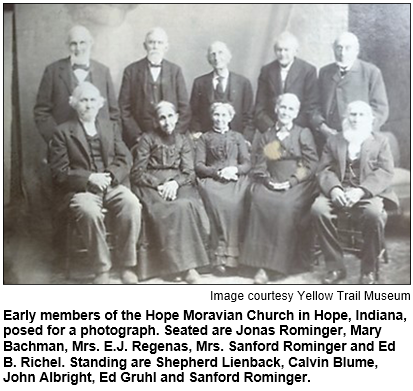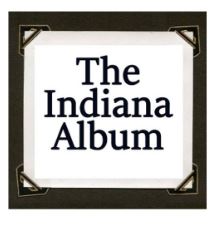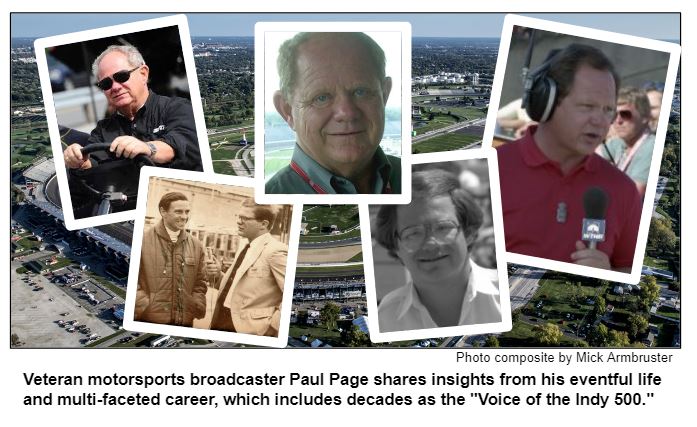Saturdays, noon to 1 p.m. ET on WICR 88.7 FM.
Or stream audio live from anywhere on WICR Online!
June 12, 2021
Moravian heritage of Hope, Indiana - Encore
|
Columbus, Ind., in Bartholomew County, south of Indianapolis, is known as a "Modernist Mecca" for its striking examples of midcentury architecture, which draw visitors from far and wide. The nearby small town of Hope in the county's northeast Haw Creek Township is much less well known, but has its own distinctive cultural heritage, which we explore in this encore of a show that originally aired in September of 2016. The show is guest-hosted by Hoosier History Live producer Molly Head.
Hope was founded in 1830 by Protestant Moravian Martin Hauser. Like many persecuted religious minorities seeking autonomy and religious freedom, Moravians moved into different parts of Europe and on to America, where they settled mostly in North Carolina and Pennsylvania. German was the language spoken by Moravians coming to America.
![]() As Hope was originally founded, the church owned and ran the town. Somewhat similar to social experiments in New Harmony with communal property, the "congregational town" concept ended in Hope in 1837 when the town was opened up to individual property ownership, and non-Moravians also were allowed to settle there.
As Hope was originally founded, the church owned and ran the town. Somewhat similar to social experiments in New Harmony with communal property, the "congregational town" concept ended in Hope in 1837 when the town was opened up to individual property ownership, and non-Moravians also were allowed to settle there.
Some early residents of Hope were descendants of the settlers of the ill-fated Moravian Mission that operated near Anderson, Ind., along the White River, from 1801 to 1806. The mission's purpose was to bring Christianity to the Native Americans in the area. The mission members and its Native American "converts" were met with strong resistance by local tribes, and in particular by The Prophet, or Tenskwatawa, the brother of Shawnee leader Tecumseh. The Prophet, full of his own religious zeal, carried out "witch hunts" against converted Native Americans, and the Moravian missions in the area eventually disappeared.
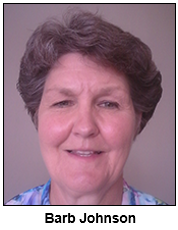 The Hope Moravian Church, founded in 1830 and originally housed in a log cabin on the town square, remains the only Moravian Church in Indiana. Many of its traditions continue today, such as display of the "putz," or elaborate Christmas scene in miniature, in the church at Christmastime, the tradition of hanging Moravian stars, and the making of Moravian sugar cakes, a type of sweet, raised coffee cake widely sold at local festivals.
The Hope Moravian Church, founded in 1830 and originally housed in a log cabin on the town square, remains the only Moravian Church in Indiana. Many of its traditions continue today, such as display of the "putz," or elaborate Christmas scene in miniature, in the church at Christmastime, the tradition of hanging Moravian stars, and the making of Moravian sugar cakes, a type of sweet, raised coffee cake widely sold at local festivals.
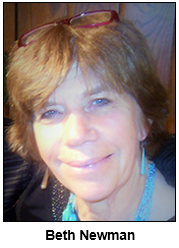 Since the 1830s, Hope Moravians have also gathered in God's Acre, the historic section of the Hope Moravian Church Cemetery, for the Easter Sunrise Service, which includes a trombone choir and a processional by all church members that involves singing songs and watching the sunrise.
Since the 1830s, Hope Moravians have also gathered in God's Acre, the historic section of the Hope Moravian Church Cemetery, for the Easter Sunrise Service, which includes a trombone choir and a processional by all church members that involves singing songs and watching the sunrise.
Molly's guests include two retired Hope elementary school teachers who also are great storytellers: Barb Johnson and Beth Newman. Both Barb and Beth have taught 4th-grade Indiana history and also have played the role of schoolmarms at the Simmons School, which is a brick one-room schoolhouse that was moved from its original location in the country to the back yard of the Hope Elementary School in 1989. Guests Barb and Beth are also involved in the Yellow Trail Museum, the history museum located on the town square. Much of downtown Hope and surrounding residential areas is listed on the National Register of Historic Places.
Editor's note: Since the original airing of this show in 2016, Barb Johnson has passed away.
People are talking about Hoosier History Live!
"Hoosier History really is 'Live' - and 'Lively' as well. The program brings to new audiences the delight and wisdom that comes with knowing more of our past and our connections as Hoosiers."
-James H. Madison, Emeritus History Professor, Indiana University
"I only listen to the show on podcast because the timing is at MY convenience. It fills a niche, and satisfies my love for Hoosier history."
-Kathleen Madinger Angelone, retired bookstore owner
"I’ve loved listening to Hoosier History Live during the pandemic as an intelligent, well-researched program to escape the news for an hour."
-Lee Little, JD, MLS, Research Librarian, Indiana University
Nelson Price, host and historian
Molly Head, producer/general manager, (317) 927-9101
Mick Armbruster, associate producer
Cheryl Lamb, administrative manager
Richard Sullivan, senior tech consultant
Pam Fraizer, graphic designer
Garry Chilluffo, consultant
Please tell our sponsors that you appreciate their support!

 For organizational sponsorship, which includes logos, links, and voiced credits in the show and in podcasts, email molly@hoosierhistorylive.org, or call (317) 927-9101 for information. Our podcast listens are increasing and we are being distributed on Indiana Memory and the National Digital Public Library. Grow with us as our podcast and internet presence expands! Thanks also to Visit Indy, Fraizer Designs, WICR-FM, Henri Pensis, Genesis Brown, Kielynn Tally, Heather McIntyre, Justin Clark, and many other individuals and organizations.
For organizational sponsorship, which includes logos, links, and voiced credits in the show and in podcasts, email molly@hoosierhistorylive.org, or call (317) 927-9101 for information. Our podcast listens are increasing and we are being distributed on Indiana Memory and the National Digital Public Library. Grow with us as our podcast and internet presence expands! Thanks also to Visit Indy, Fraizer Designs, WICR-FM, Henri Pensis, Genesis Brown, Kielynn Tally, Heather McIntyre, Justin Clark, and many other individuals and organizations.
Thank you!
We'd like to thank the following recent, new and renewal contributors whose donations help make this show possible!
- David Yount
- Tom Swenson
- John Stanton
- Kathleen Angelone
- Tim and Meg Shelly
- Connor & Company, Inc.
- Georgia Cravey and Jim Lingenfelter
- Ann Frick
- Yetta Wolen
- In memory of William G. "Bill" Mihay
- Dr. William McNiece
- Michael Freeland and Sharon Butsch Freeland
- David E. and Lynne J. Steele
- Stacia Gorge
- Margaret Smith
- Rachel Perry
- Tom and Linda Castaldi
- Greg Larson
- Marion Wolen
- Ryan Zumbahlen
June 19, 2021 - Coming up
Paul Page on motorsports broadcasting and some wild rides
Not only did he recover from a harrowing helicopter crash that almost struck Speedway High School in 1977, he also had to cope earlier that year with the suicide of his mentor, Sid Collins, the original "Voice of the Indy 500" on the Indianapolis Motor Speedway Radio Network.
Veteran motorsports broadcaster Paul Page - who was inducted into the IMS Hall of Fame last month - will be Nelson's guest to share insights from his eventful life, including his close friendship with three-time Indy 500 winner Bobby Unser, who died in May at age 87. Unser periodically had been Paul's sidekick in the broadcast booth on both radio and TV.
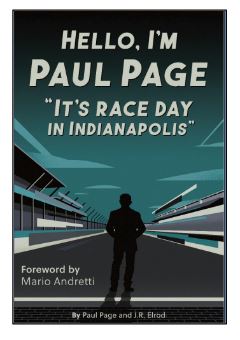
These episodes - including his stint as a licensed paramedic (he participated in many emergency runs) - are described in Paul's new autobiography, Hello I'm Paul Page: It's Race Day in Indianapolis (Cardinal Publishing).
The book opens with the plummeting of the helicopter - a news chopper for WIBC Radio - in 1977 with Paul and two others aboard. Although all of them survived the crash of the aircraft onto the football field at Speedway High (the helicopter narrowly missed the school building), Paul suffered severe leg injuries and endured a long recovery.
After his return to broadcasting, he landed gigs with national TV and radio networks - including NBC Sports, ESPN and ABC Sports - and covered sports ranging from fencing to Sumo wrestling.
First and foremost, though, Paul always will be identified with motorsports broadcasting, particularly the Indy 500, which, he writes, has been his "obsession" since he first visited the Speedway as a 15-year-old in 1960.
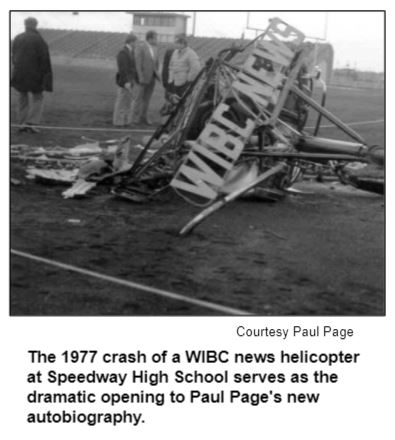
During our show, Paul will discuss the 1973 race as well as his interviews with iconic drivers, including four-time winner A.J. Foyt, who is renowned for being, as Paul puts it, "intimidating." But he also describes episodes - including an incident that unfolded at Foyt's ranch in Texas where Paul was a houseguest - that demonstrate the driver's compassionate side.
In 1977, Paul and a colleague discovered the body of his mentor, Sid Collins, who had taken his own life. During the early 1950s, Collins had developed the concept for the IMS Radio Network and was able to convince long-time Speedway owner Tony Hulman of its merit.
In his book, Paul praises Hulman (1901-1977) for his kindness. He also celebrates the inclusive spirit of the Indy 500:
"It's a place for everyone: the wealthiest sponsors, owners and stars; the middle-class ticket holders, and the blue-collar fans in the infield."
Copyright 2021
|

